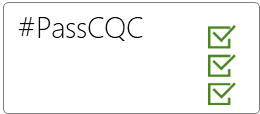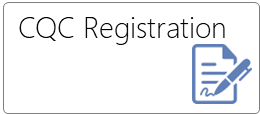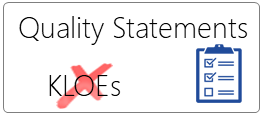|
Problems we encounter
|
Solutions
|
|
| Cleanliness |
Cleanliness issues or just an untidy setup creates a bad impression and it is easy to become oblivious to this. This problem is not dissimilar to moving into a new house and thinking that the first thing you will change are the bright purple carpets. Two weeks later you think that you will concentrate on doing the walls and change the carpets later. Six months down the line, other things have taken priorities and you almost don’t notice the bright purple carpets anymore, till someone visits and points them out to you. |
Get your practice ‘Deep Cleaned’ A CQC visit is your chance to put your best foot forward. Cleaning up your surgery is no different to tidying up before a dinner party. |
| Medical Fridges |
|
Make sure that nothing other than medicines stored in the medical fridge. Clean out the inside of the fridge(s) Ensure that your fridge monitoring temperature logs are available and discard any out of date medicines. |
| Medicines Management |
|
Also ensure that there are no medicines ‘lying’ around in clinical rooms or patient accessible areas. Handy Hint: One thing that tends to get over-looked is out of date hand sanitizers |
|
Notice Board |
For our audits this is usually our first port of call.to see what things have been achieved, and how well informed your staff are. E.g. your Work place risk assessment pinned to the notice board gives assurance that not only have you conducted the Risk assessment but have ensured that staff are aware of the risks.
|
Public Notice Board Things that you may consider displaying are Handy Hint: To save time, start using expiry dates on notices so that they can be binned when no longer relevant. |
| Staffing |
The fear of an impending visit as it tends to stress out some people for fear of saying or doing the wrong thing on the day. It has been our experience that some staff will even call in sick on the day, leaving you short-staffed. |
Consider only informing key members of your team about the CQC inspection. |
| Staff |
As part of our audits we spend a good portion of our time talking to staff. The reason for this is not to trip them up but to find out if anyone other than the Practice manager knows about the ‘policies and protocols’ of how the practice is to run. When we talk to staff they often can’t remember or recall information. Common reasons given are:
|
Whilst we suggest that you might not want to tell all staff about the planned CQC inspection, do call everyone in for a staff session and go through short re-training sessions on essential items e.g.
|
| Re-schedule Appointments |
Doctors may have clinics and hence a limited time to spend withthe inspectors. Re-schedule the appointments if you can to allow time for them to be able to answer and clarify things that other team members may not have as much knowledge of. |
During the visit the CQC inspector will want to talk to the clinicians. Though most will wait to catch them during breaks etc. you might want to consider re-scheduling appointments for the day of the visit so that there is a clear break. |
| ‘Difficult’ patients |
Whether we admit it or not, we all have those ‘difficult’ patients that we’d rather were not present on the day of the inspection. |
Re-schedule their appointment, try and see them before or after the visit. |
| Confidentiality |
Patient records lying around at reception and clinical rooms in easy access of other patients Staff logging in using other’s log-in’s and/or passwords. |
Ensure practice looks tidy and efficient, and that confidential records are not left lying around. |
| Love Bomb Patients | Many practice managers ask us how they are going to manage the few patients that an inspector is likely to talk to, as this handful may not be a true reflection of the 7500 patient list) |
The easy answer is don't try managing this. If your practice is good, it will come straight from the patient. |
| Hand Hygiene | We regularly come across staff who do not sanitize hand, even after handling samples. |
Get everyone to religiously sanitize their hands and disinfect touch screens at regular intervals. Hand hygiene is not only a simple task to prevent infection and cross contamination but a visual reminder creating an impression that you take infection control seriously. |
| The Weakest Link | There is always one member of the team who does not know what to do because:
|
You are as strong as the weakest link. If you have someone who is going to be letting the rest of the team down; other than it begging the question, ‘why are they still working for you?’ |
| Get your evidence files in order | Keep visiting everythingCQC and find out what outcomes the inspectors are looking at. |




